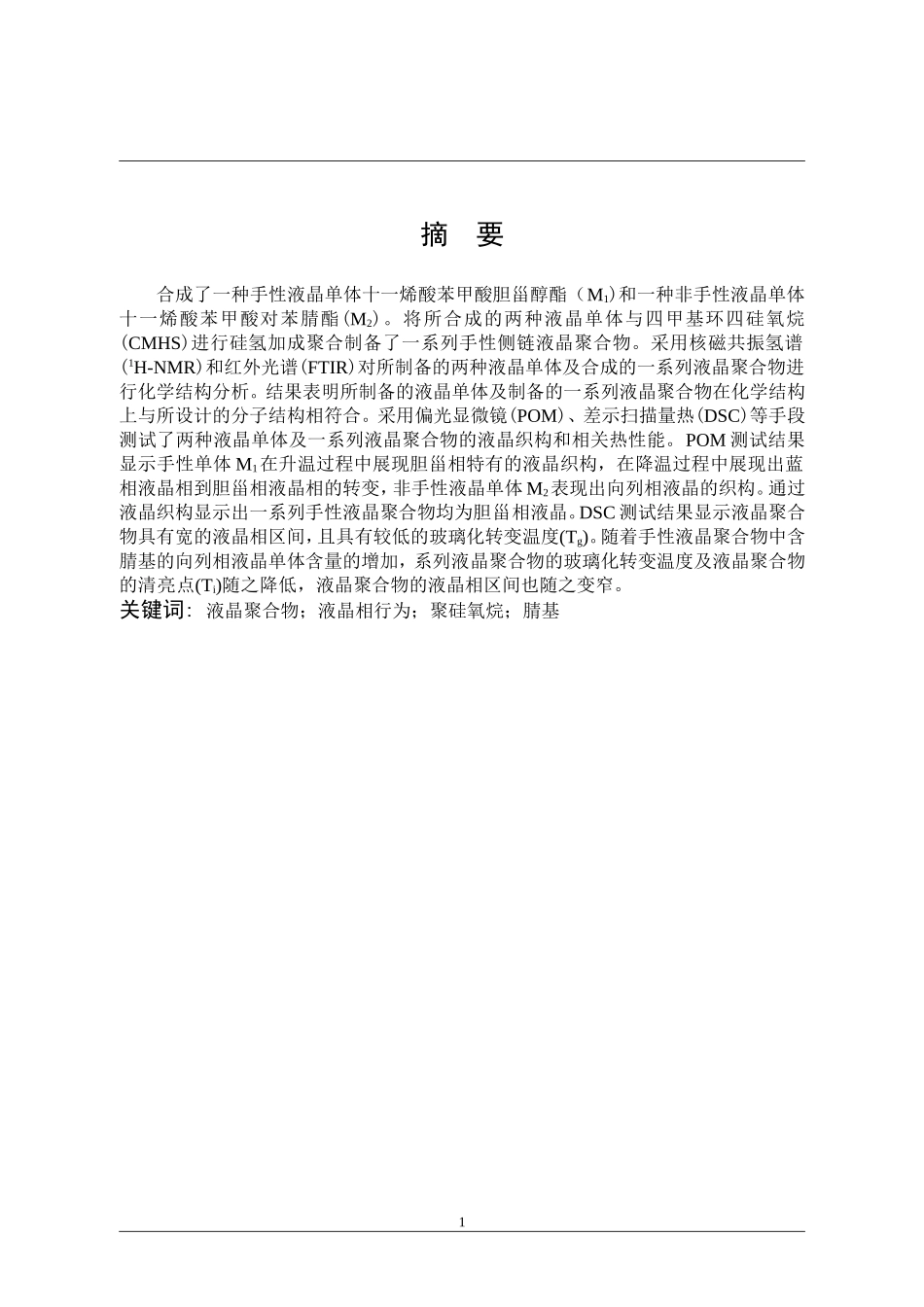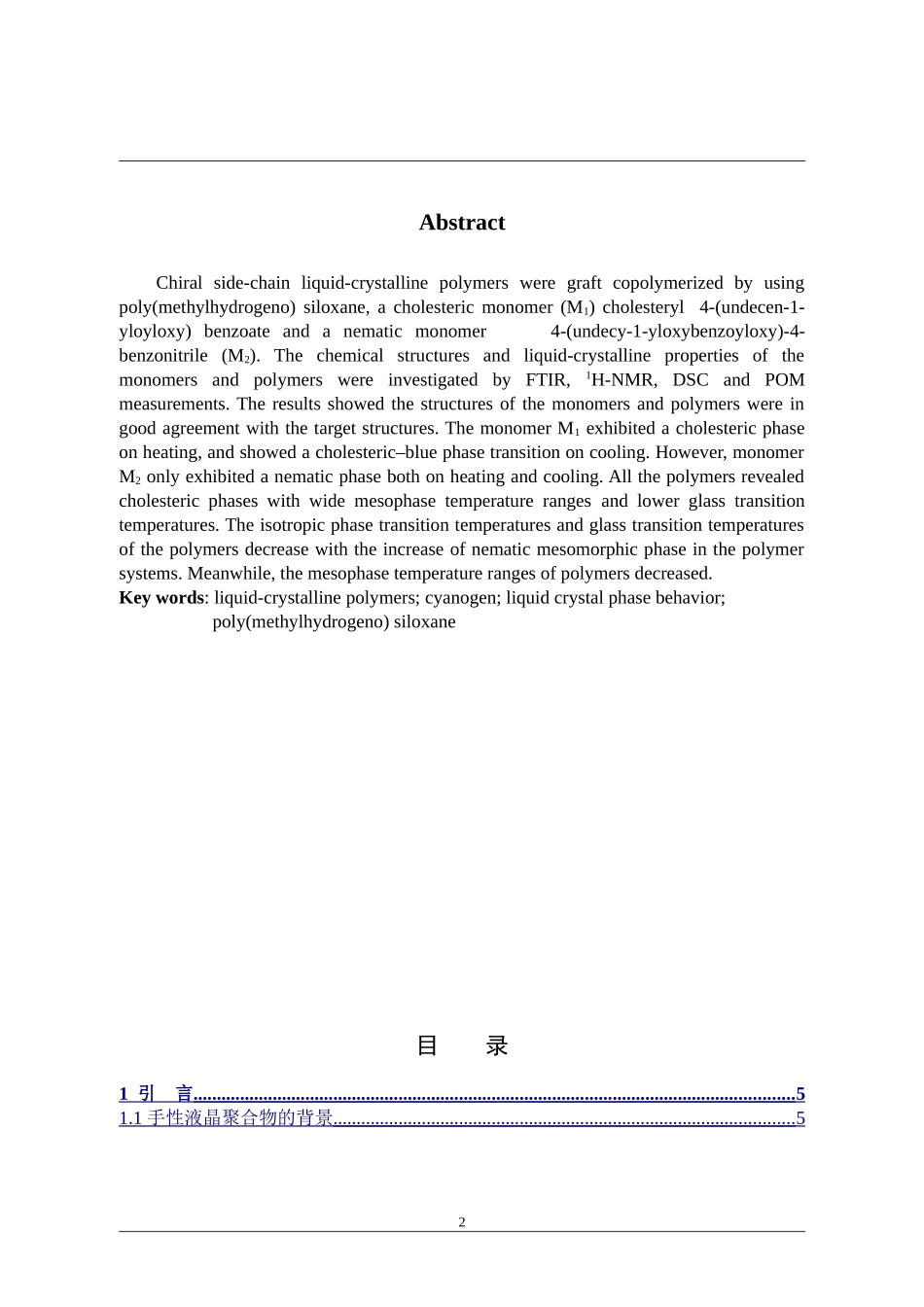1摘 要合成了一种手性液晶单体十一烯酸苯甲酸胆甾醇酯(M1)和一种非手性液晶单体十一烯酸苯甲酸对苯腈酯(M2)。将所合成的两种液晶单体与四甲基环四硅氧烷(CMHS)进行硅氢加成聚合制备了一系列手性侧链液晶聚合物。采用核磁共振氢谱(1H-NMR)和红外光谱(FTIR)对所制备的两种液晶单体及合成的一系列液晶聚合物进行化学结构分析。结果表明所制备的液晶单体及制备的一系列液晶聚合物在化学结构上与所设计的分子结构相符合。采用偏光显微镜(POM)、差示扫描量热(DSC)等手段测试了两种液晶单体及一系列液晶聚合物的液晶织构和相关热性能。POM 测试结果显示手性单体 M1在升温过程中展现胆甾相特有的液晶织构,在降温过程中展现出蓝相液晶相到胆甾相液晶相的转变,非手性液晶单体 M2表现出向列相液晶的织构。通过液晶织构显示出一系列手性液晶聚合物均为胆.甾.相液晶。DSC 测试结果显示液晶聚合物具有宽的液晶相区间,且具有较低的玻璃化转变温度(Tg)。随着手性液晶聚合物中含腈基的向列相液晶单体含量的增加,系列液.晶聚合物的玻璃化转变温度及液晶聚合物的清.亮.点(Ti)随之降.低,液晶聚合物的液晶相区间也随之变窄。关键词: 液晶聚合物;液晶相行为;聚硅氧烷;腈基2AbstractChiral side-chain liquid-crystalline polymers were graft copolymerized by using poly(methylhydrogeno) siloxane, a cholesteric monomer (M1) cholesteryl 4-(undecen-1-yloyloxy) benzoate and a nematic monomer 4-(undecy-1-yloxybenzoyloxy)-4-benzonitrile (M2). The chemical structures and liquid-crystalline properties of the monomers and polymers were investigated by FTIR, 1H-NMR, DSC and POM measurements. The results showed the structures of the monomers and polymers were in good agreement with the target structures. The monomer M1 exhibited a cholesteric phase on heating, and showed a cholesteric–blue phase transition on cooling. However, monomer M2 only exhibited a nematic phase both on heating and cooling. All the polymers revealed cholesteric phases with wide mesophase temperature ranges and lower glass transition temperatures. The isotropic phase transition temperatures and...


